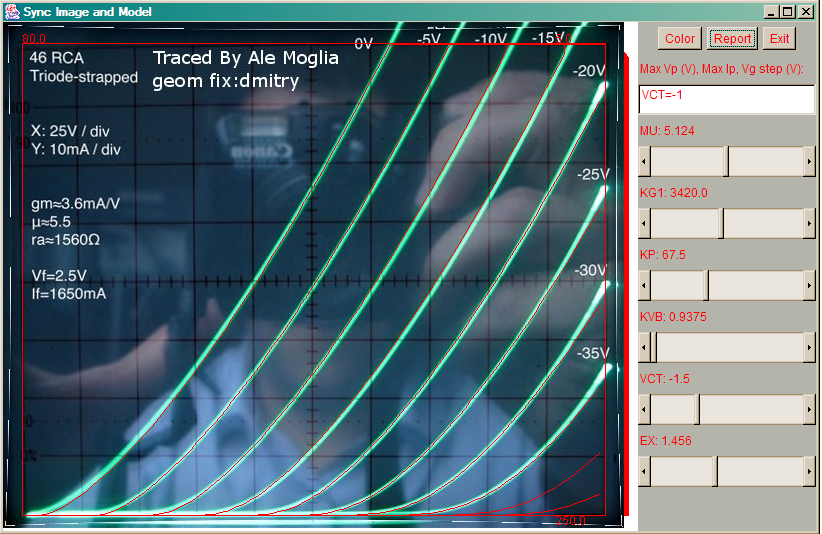Having built the 4P1L filament bias driver stage in a breadboard, I now have the sufficient voltage swing to drive the 46 to maximum sweep. In my 4-65a SE amp, a maximum of 200Vpp is required to drive the amp into class A2.
The following tests conditions were used:
- 4P1L first stage:
- DN2540 gyrator in mu follower output
- 220nF/450V Capacitor coupled into 46 driver
- Filament bias: 15 ohms, Vgk=-10V
- Vsupply=355V and Va0=210V
- Output set to about 30-32Vpp to drive 46 at 200Vpp
- 46 driver stage:
- IXYS 01N100 gyrator in mu follower output
- Load impedance is 100K (Pete Millett’s interface)
- Filament bias: 10 ohm / 100W Vgk=-17V
- Vsupply=355V and Va0=204-208V
- Output set to 200Vpp
I tested 28 valves. Just a few of my lot are NOS. The average THD was about 0.4-0.5% but a good selection of 8 valves (mainly Sylvania NOS) provided a consistent 0.18% THD:
 Happy now with the initial tests and selection of 46 pairs for the amplifier, I can now continue with the build…
Happy now with the initial tests and selection of 46 pairs for the amplifier, I can now continue with the build…




 The performance is very good. I just picked up a random 46 from my stock and biased it at 204V (which is the operating point in my design) achieving less than 0.05% at 10Vrms. Need to re-run this test to see how will perform at 70Vrms:
The performance is very good. I just picked up a random 46 from my stock and biased it at 204V (which is the operating point in my design) achieving less than 0.05% at 10Vrms. Need to re-run this test to see how will perform at 70Vrms:






















